MO Tested: AGV Sportmodular Helmet

AGV's full-carbon modular
AGV set out to change the game with its new full-carbon modular helmet. The Italian company boasts that the Sportmodular is the world’s first modular helmet constructed entirely out of carbon fiber which makes it a modular that is lighter than plenty of other helmets on the market, not just other modulars.
AGV Sportmodular Helmet
| Aesthetics | 9.5/10 |
| Protection | 9.0/10 |
| Value | 8.5/10 |
| Comfort/Fit | 9.0/10 |
| Quality/Design | 9.0/10 |
| Weight | 10.0/10 |
| Options/Selection | 9.0/10 |
| Innovation | 9.5/10 |
| Weather Suitability | 9.0/10 |
| Desirable/Cool Factor | 9.0/10 |
| Overall Score | 91.5/100 |
I’ve spent thousands of miles wearing the AGV Sportmodular through varying climates and on plenty of different motorcycles, and the helmet’s practicality and versatility has caused me to keep grabbing it on my way out the door.
The AGV Sportmodular is light. In fact, it’s the lightest helmet in my gear closet, weighing in at 3-pounds 2.6-ounces (1434 grams) for my medium. AGV uses three shell sizes for the Sportmodular with XS and S using the smallest, M and L using the next, and XL-XXXL fitting into the largest shell size. Within those three shells are four different size EPS liners, ensuring an optimum fit for sizes XS-XXXL.
The light nature of this carbon helmet is really the big story here. Historically, modular helmets tend to be some of the heaviest simply due to their more complex design. I haven’t weighed the AGV Numo or Miglia, the company’s previous modular models, but they both felt extremely heavy just grabbing one off the shelf, which makes the Sportmodular even more impressive and an important model for the brand.
If anyone can make modular helmets sexy, it’s the Italians… and the use of carbon fiber. The helmet looks great in any one of the seven color options. Of course, you can’t go wrong with just the raw matte or gloss carbon. After perusing the company’s social media postings to get the public’s feedback on the helmet’s initial release, it would seem I’m not alone. The helmet has received tons of comments from folks who love the look. Maybe this will be the helmet to bring modulars out of the over 50-year-old touring rider demographic they’ve been pigeon-holed into here in the states. Those folks just know what you don’t, yet.
As with most AGV helmets in the last few years, the liner is comprised of Shalimar, Nabuk, and Ritmo with the crown portion of the liner being reversible. All these materials offer antimicrobial sweat-wicking properties. Ritmo is used on the cheekpads as well as one side of the crown to offer a cooler feel, while Shalimar is used on the reverse side of the crown to offer a warmer feel. Shalimar and Nabuk are used on the bottom of the neck roll to help prevent moisture from wicking its way up into the helmet during moist rides.
Wearing glasses of any sort with the Sportmodular is a comfortable affair as the cheekpads have been purposefully designed with potential glasses use in mind, which makes donning even the thickest-armed sunglasses EZ.
I typically opt for helmets that carry an intermediate oval head shape and the Sportmodular fits me very well. When I initially received the helmet, I noticed some pressure on my jawbones when I would tighten the titanium D-ring straps; however, that has subsided now that the helmet has broken in a bit. It’s also easy, with the helmet flipped open, to really ratchet the titanium D-ring retention straps fairly tightly, causing the helmet to be further squeezed into your jawbones due to the flexible nature of the carbon lid.
The Sportmodular carries both DOT and ECE 2205 safety certifications. AGV claims the helmet has met the same AGV Extreme Standards that their top-of-the-line Pista GP-R helmet is subjected to which earned the race lid a five star SHARP rating. AGV’s Pista GP-R, Corsa, and Veloce GT helmets carry the five-star safety rating from the Safety Helmet Assessment and Rating Programme (SHARP), and while the Sportmodular has yet to be rated by SHARP, AGV expects it to receive the same rating.
For creature comforts, the Sportmodular offers a drop down sun visor (we wish it extended down a bit further and was perhaps was a bit darker), two forward facing closable vents, one rear vent that acts as a small spoiler when flipped up, a pinlock-ready shield with the Pinlock 120 insert included in the box, a locking shield, and recessed pockets for Bluetooth communication systems.
Ventilation in the helmet works surprisingly well with both forward-facing vents being center-mounted, though riding with the top vent open even at slow speed adds a fair amount of wind noise to an already not-so-quiet helmet. One of my few gripes with the helmet is that it’s fairly loud, and even after installing the Sena 30K system (of which installation was quite easy) into the helmet and pushing the pads closer to my ears, which I thought might help with noise reduction, the helmet still lets in a fair amount of noise. If you ride with earplugs, which we all should, you’ll be fine.
The latching mechanism is nicely placed at the bottom of the chin bar which can only be seen by flipping the helmet upside down, a design that, to me, seems entirely logical, but when looking at Brasfield’s favorite Shoei Neotec II, I guess some folks must not mind a giant red button in the middle of their chin bars. In a few instances, the latch has not locked shut when pulling the front of the helmet down, but it is immediately noticeable and only required a second pull on the latch to spring the locking mechanism back into place to fully lock the chin bar in place.
The face shield itself offers a solid latching closure as found on the Pista, Corsa, and Veloce S models which allows for a half closure for some airflow and fully locked for race duty, not that you’ll likely be using it for track work. The shield is also designed to work with the Pinlock 120 insert, which is a newer larger product from Pinlock to better keep the edges of the insert out of your field of vision. The Pinlock is included with the helmet.
It’s hard to beat the practicality of a modular helmet, especially one as light as the Sportmodular. As usual though, carbon ain’t cheap. The Sportmodular will set you back between $749 – $849 depending on your graphic choice.

Ryan’s time in the motorcycle industry has revolved around sales and marketing prior to landing a gig at Motorcycle.com. An avid motorcyclist, interested in all shapes, sizes, and colors of motorized two-wheeled vehicles, Ryan brings a young, passionate enthusiasm to the digital pages of MO.
More by Ryan Adams




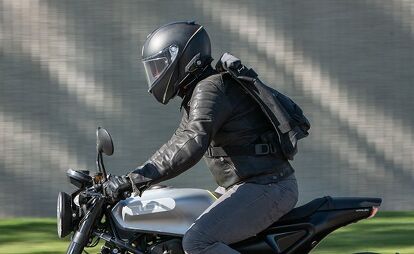
















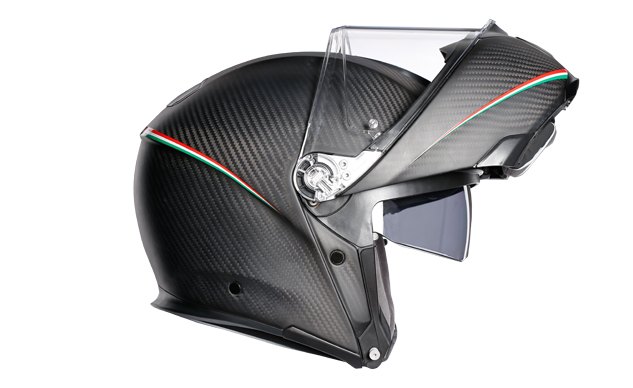

































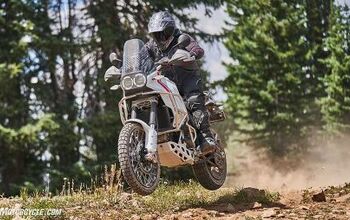
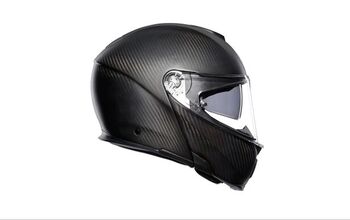
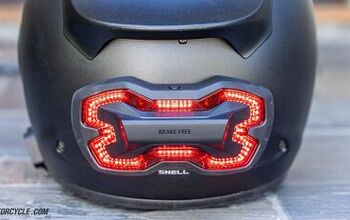
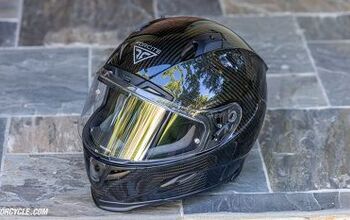
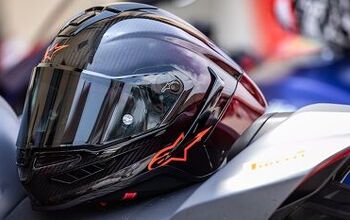






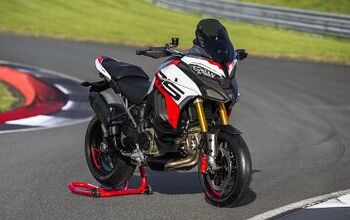




Comments
Join the conversation
It would be nice if AGV and Sena got together like the Shoei, Neotec
Thanks for posting the verified weight. Still waiting for Brasfield to tell us what the Neotec II weighs.